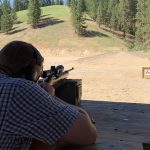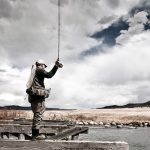Hunting communications were a central focus of the United States Supreme Court on Tuesday as the Justices heard arguments in the case U.S. v. Stevens, 08-769, according to a release by Profressional Outdoor Media Association.
At issue in the case is a 1999 federal law that makes it a crime to create, sell or possess videos and other depictions of cruelty to animals. The case arose over the conviction of a Virginia man, Robert Stevens, who received a three-year prison sentence from a Western Pennsylvania court for selling videos that included scenes of hunting with dogs. The Third Circuit Court of Appeals overturned the conviction, stating it was in violation of Steven’s First Amendment rights.
In addition to working with the Washington, D.C., Jones Day Law Firm to file an amicus curiae brief on behalf of its members, the Professional Outdoor Media Association (POMA), headquartered in Johnstown, Pa., coordinated a larger group of amici from a wide range of constituencies, including numerous large organizations and more than 600 individual journalists, outdoor industry professionals and sportsmen.
POMA Executive Director Laurie Lee Dovey was in the courtroom to hear the arguments.
“The Justices were highly engaged,” Dovey said. “Clearly, their queries were focused on testing the limits of the First Amendment. The questions were direct and at times extreme.
“Patricia Millett, the plaintiff’s attorney, represented Mr. Stevens, the hunting and fishing industry and traditional outdoor sports journalists at the highest level,” Dovey added. “Patricia understands how the statue could criminalize the communication and promotion of legal hunting and fishing activities. She directly argued the overreach and chilling effects of the existing statute.”
Testing the wide net cast by the language of the law, hunting-related questions were debated. Deputy Solicitor General Neal Katyal often stated hunting imagery did not fall within the parameters of the statute. Justice Antonin Scalia seemed to disagree. Scalia concentrated on the language in the statute that says, “ a visual or auditory depiction in which a living animal is intentionally maimed, mutilated, tortured, wounded, or killed.”
“Kill” has one meaning, which is kill,” Scalia told Katyal, plainly indicating concerns about the legal actions of hunters. Katyal responded with a statement citing cruel killing versus hunting. Scalia countered with a question about an accidental low shot on an animal by a hunter, which he said was completely legal. Justice John Paul Stevens also asked about bow-and-arrow hunting or hunting with knives. Katyal backpedaled, saying, “So, there may be certain hunting examples that fall within it (the law).
Justice Ruth Bader Ginsburg looked at another aspect of the law, the separation of the filming of a criminal act and participation by a photographer in a criminal act. The abuse of the dog and the filming of the act are different, she said. The abuse would go on with or without the photographer. The comparison being made was to image-makers in child pornography cases where the photographer is an actual participant in the criminal act.
In response to questions by Justice Stephen Bryer about Congress simply writing a statute that actually aims at the “frightful things they were trying to prohibit,” Millett agreed Congress must use a scalpel, not a buzz saw, when crafting statutes that restrict free speech.
Justice Samuel Alito posed the most difficult hypothetical of the day to Millett. He asked if the First Amendment would cover “a human sacrifice channel”. The discomfort in the courtroom was palpable.
Taking a few moments to collect her thoughts, obviously taken aback by the extreme nature of the Justice’s example, Millett responded.
“I don’t want to watch this channel, and people should fight with their wallets and their votes and not support these things,” she said. “But, under the First Amendment, if the only rationale Congress is giving is we are here to shield your eyes for you, we will make this censorial decision, it has got to find some basis to think that was never freedom of speech under the First Amendment, in the way that obscenity was. You don’t get to make it up as you go along. We are interpreting a constitution.”
The United States Humane Society, which pushed the original prosecution of Robert Stevens, claimed this case was and is about animal cruelty. POMA, National Rifle Association, Safari Club International, National Media Coalition, American Society of Media Photographers, National Press Photographer’s Association and dozens of other groups, which filed amicus curiae briefs in the case, strongly disagreed. They defined U.S. v. Stevens as a First Amendment case that could have potentially devastating consequences on journalists and Americans’ right to information.













